Creating an e-commerce site means entering a competitive market. Online sales require substantial investment not only to set up a store, but also to promote it, convince customers and build loyalty. The Internet also exposes you to counterfeiting. This can have a negative impact on your sales. Likewise, it’s essential to carry out the appropriate prior art searches to avoid becoming a counterfeiter yourself. Let’s take a look at the elements that can be protected on your e-commerce site!
Brand and logo protection
Your brand and logo are an integral part of your identity. The field of visual communication allows you to associate a name with a graphic charter, from the logo to a range of colors or symbols that characterize your company. Your brand is your signature, and becomes a real selling point. In the context of e-commerce, the level of competition in France and beyond forces you to protect your brand as far upstream as possible.
To protect your intellectual property, you need to register with INPI. It is advisable to be accompanied by a CPI before and during the formalities.
Reserving domain names is not enough!
The creation phase of an Internet site requires the reservation of domain names, which may or may not be exploited. It’s good practice to obtain ownership of a wide range of domain names for your e-commerce business. It allows you to ensure your e-reputation by keeping control of digital communication channels. However, just because you own a domain name doesn’t mean you own the trademark! You don’t own the domain name by virtue of this formality alone.
Reserving a domain name does not exempt you from the trademark registration procedure. And if you reserve a domain name and a trademark of the same name already exists, you may be liable to prosecution.
The reverse is true if you own a trademark and later discover that a third party has reserved the corresponding domain name: you can attempt to recover the domain name via the UDRP, UDR or SYRELI procedure.

Protect the website’s visuals and design elements
Registering designs enables you to protect your intellectual property for visual elements, or the design of your e-commerce website.
To register visuals and design elements, you need to create reproductions. Make sure you choose the method that provides the most faithful representation. It’s up to you to decide whether diagrams, computer graphics or even photographs are the most appropriate. The advice of an industrial property attorney or an IP lawyer will help you decide which elements to include in your documents. This will be the only basis on which to defend your rights, so ambiguity is a risk!
In France, theINPI receives design and model registrations. For Europe, please refer to the EUIPO (European Union Intellectual Property Office).
Protecting databases
Databases are legally protected if their presentation is original. You can thus benefit from protection for a set of information collected on a computer medium.
Copyright applies to databases, enabling a distinction to be made between moral rights and proprietary rights. The creation of a database as part of your e-commerce activity gives you the moral right to object to its modification. However, you can grant a license by assigning economic rights to allow third parties to use the database.
Did you know?
Theelectronic Soleau envelope, and Blockchain technology, enable you totime-stamp information. These processes certify the date and author. They are therefore relevant for database protection.
In all cases, the creation of a database must comply with regulations on public order, and for the collection, archiving and processing of personal data (RGPD).
Protecting an e-commerce business with a patent
The products sold on your e-commerce site may well benefit from patent protection. Your inventions set you apart in the marketplace. Thanks to this industrial property title, the holder enjoys exclusivity for the duration of the patent’s validity.
Source code comes under copyright, not patent law. Program code is considered an intellectual work. On the other hand, if your solution, product or service is similar to a process implemented by a computer, using a particular algorithm, then it is probably patentable.
Copyright protection for original content
Google has introduced a procedure enabled by the DMCA (Digital Millennium Copyright Act). This makes it easier to find and take legal action when a third party infringes your copyright. For the record, Google is the search engine used by over 90% of French people to search the Web.
Unauthorized copying of your content and reposting of your texts are just some of the unauthorized practices. If you find that your copyright has been infringed, you can use our reporting form to request the removal of irregular content from Google’s search results. However, just because content is no longer visible in the results doesn’t mean it no longer exists! To go further, you’ll need to contact the publisher to organize the appropriate procedures (formal notice, complaint, etc.).
It’s worth noting that Google and all other search engines detect duplicate content. Using texts that are not original therefore penalizes a site’s ranking in the search results.
